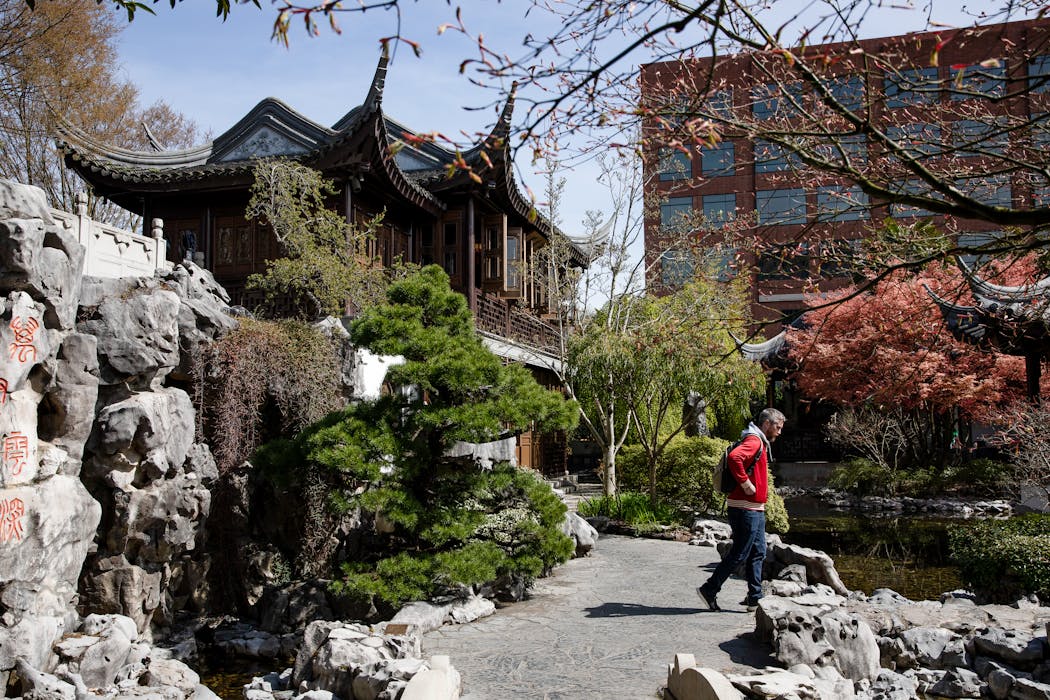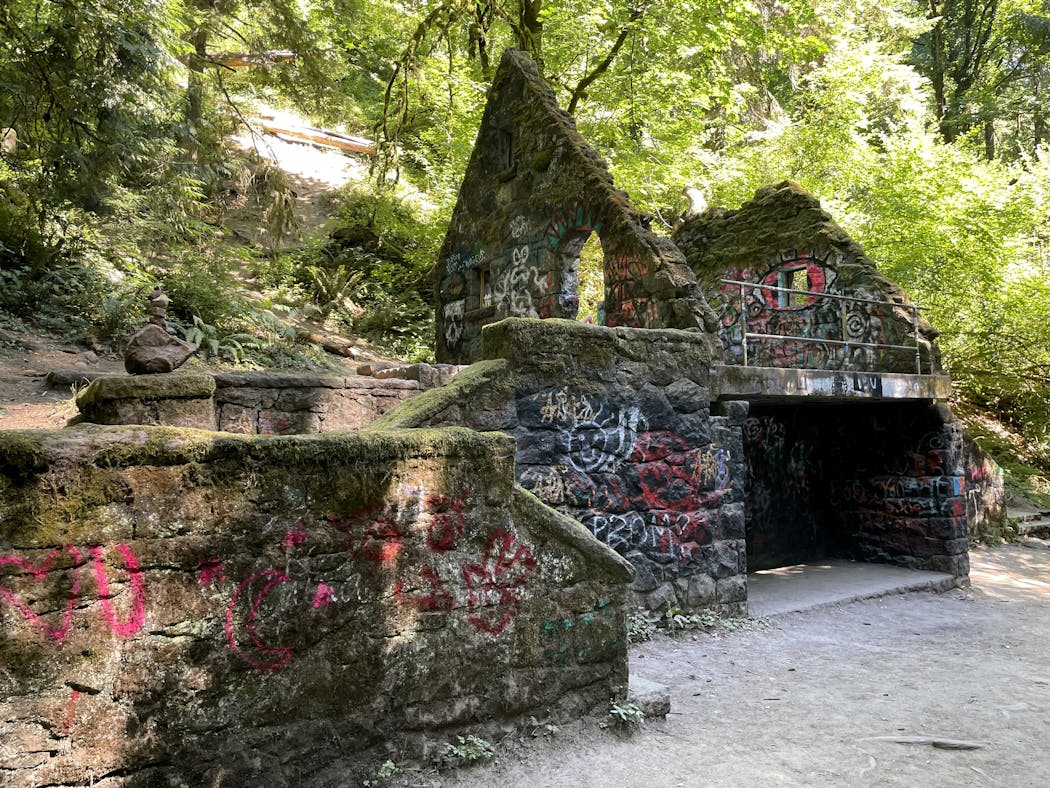On a recent trip to Portland, I admired tranquil Japanese and Chinese gardens, craned my neck to gaze at redwoods towering overhead, and hiked through a forest to find a witchy retreat — all within the city limits.
The city is beloved for its proximity to the great outdoors, with the waterfall-dense Columbia River Gorge and rugged Oregon Coast within a couple hours' drive. But you don't need a car to experience the Pacific Northwest's green spaces and vibrant fall foliage.
Portland has a robust mass transit system, with buses, streetcar lines and light rail routes that connected my Airbnb rental in Southeast Portland's Hawthorne district with the rest of the city. It wasn't just easy to get where I needed to go, it was easy to pay for it: Instead of fumbling with coins, I could use my contactless credit card or phone as a transit pass. Once I hit the cost of a day pass ($5, or the equivalent of two rides) I rode free for the rest of the day with the tap of my credit card.
The high-frequency MAX Blue and Red light rail lines seem tailor-made for car-free nature lovers, with a stop at the underground station in Washington Park. The sprawling 410-acre park on the western edge of Portland has 15 miles of trails and several attractions including the Hoyt Arboretum, Portland Japanese Garden, International Rose Test Garden (typically in bloom May through October), World Forestry Discovery Museum and the Oregon Zoo.
Authentic colors
My first destination was the Portland Japanese Garden, considered by many (including one former Japanese ambassador) to be the most authentic garden of its kind outside Japan. The garden is designed for thoughtful meandering rather than a purposeful hike, and its eight garden spaces reflect different styles and historic eras, ranging from the stark raked gravel of the Sand and Stone Garden to the Natural Garden's diminutive gurgling brook.
The attention to detail is meticulous throughout, from the deliberate movements of a tea ceremony demonstration to the harmonious shades of green. In the fall, those green hues are accented by the bright reds and golds of Japanese maples. Peak color is typically the last two weeks of October. At the Bonsai Terrace, you'll find colorful fall displays in miniature.
Fall in Portland is temperate, with an average October high temperature of 64 degrees. If you do need to warm up, the garden's Umami Cafe serves Japanese teas and light snacks. Built on a hillside overlooking the garden entrance, it feels like the world's most stylish treehouse. The beautiful presentation of the food and beverages mirrors the garden's intentionality, and the genmaicha (brown rice tea) and manju (cake filled with red bean paste) tasted as exquisite as they looked.
My next stop was the Hoyt Arboretum, about a one-mile walk from the Japanese Garden via a wooded trail. (Alternatively, you can take the free Washington Park shuttle, which connects the main attractions.) The arboretum is an open-air, living museum, with over 2,000 species of trees and shrubs from six continents arranged in themed collections. I was most drawn to trails that featured trees native to the Pacific Northwest, like the Redwood Trail. My eyes traveled up and up to the tops of giant sequoias and coastal redwoods —although, since they were planted less than a century ago, the trees have quite a way to go before they reach their full towering potential.
Thanks to the wide range of species, fall-color season at the arboretum runs from September through November. It's not just foliage: There are also trees like the crape myrtle that develop a colorful patchwork bark during the cooler months, and other species are adorned with fruit and late-blooming flowers. The Maple Trail, which features 128 different species of maples, is especially striking.
Chinese garden
The next green space I visited had a far more developed feel. Lan Su Chinese Garden is just west of the Willamette River in Portland's historic Old Town, within walking distance of downtown. When I ignored the occasional traffic sounds and let my eyes blur over the surrounding buildings, the serene setting transported me to the 16th century — the garden is a replica of a Ming Dynasty-era wealthy family's compound. It combines natural elements, such as a limestone imported from China and stately trees, with traditional Chinese architecture, including a building that serves as a teahouse.
Throughout the year, Lan Su Chinese Garden hosts cultural and horticultural events, and in November the focus is on the garden's chrysanthemum collection. The fall-blooming flowers have been cultivated in China for centuries.
Forest Park
The last Portland green space I visited was Forest Park, located in the Northwest District. The park's Lower Macleay Trailhead is easily accessible via city bus. I hiked through only a tiny portion of the 5,000-plus-acre park, which has over 80 miles of trails through hillside forests of fir, maple and cedar trees.
My destination was the Witch's Castle, a local landmark that embodies Portland's quirky sensibility. The stone structure, built in the 1930s, once housed a ranger station and restrooms. Today, the roof has collapsed and the walls are decorated with layers of graffiti and shrine-like collections of ephemera left by previous hikers. In the daytime, it's more weird than spooky.
But following the trail through Forest Park and Washington Park to the light rail station, admiring the colorful leaves along the way? That's a quintessential fall experience in Portland.

Chants of 'shame on you' greet guests at White House correspondents' dinner shadowed by war in Gaza
Two die in Wyoming, Minn., crash
Oregon's Sports Bra, a pub for women's sports fans, plans national expansion as interest booms
Retrial of Harvey Weinstein unlikely to occur soon, if ever, experts say






